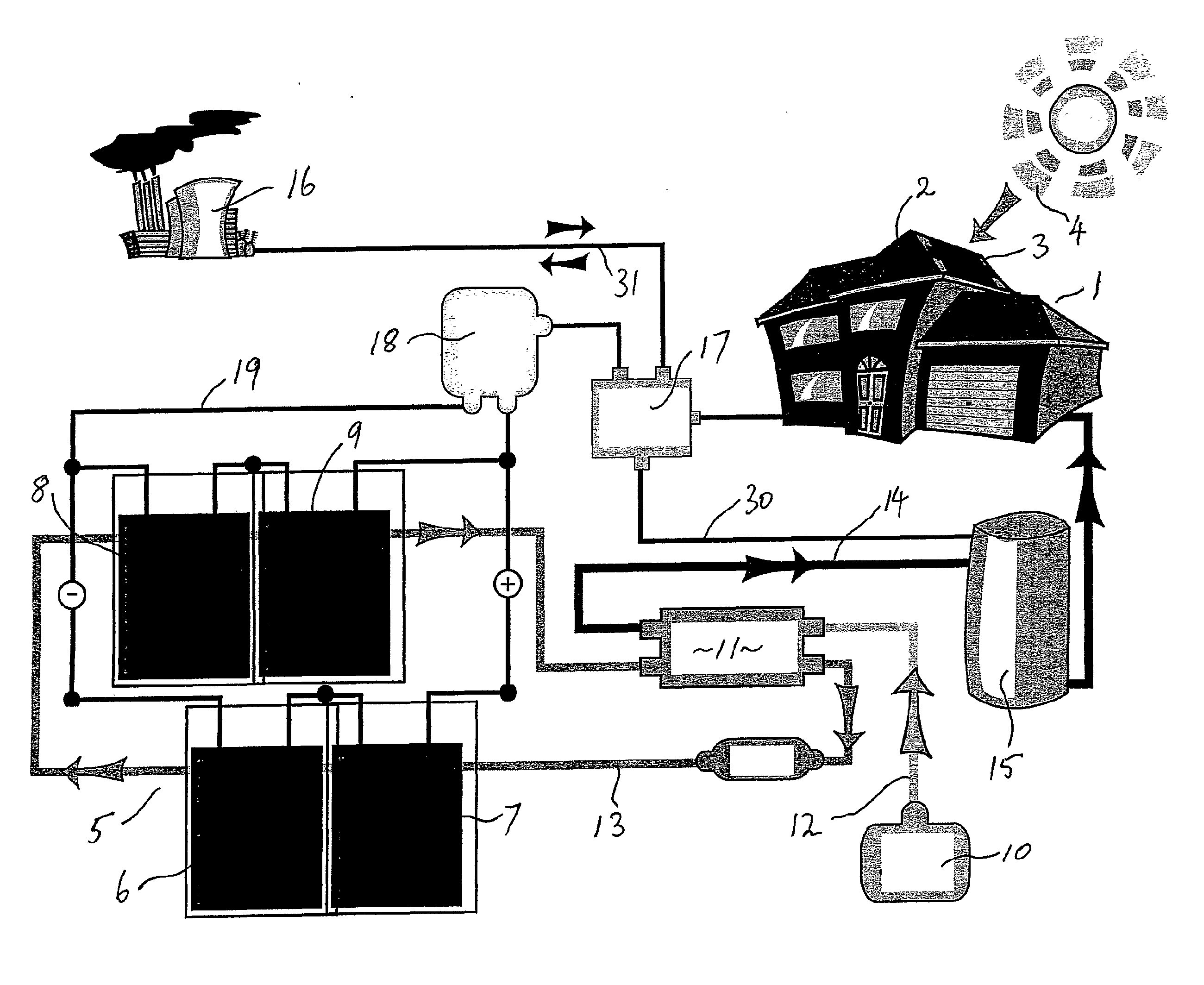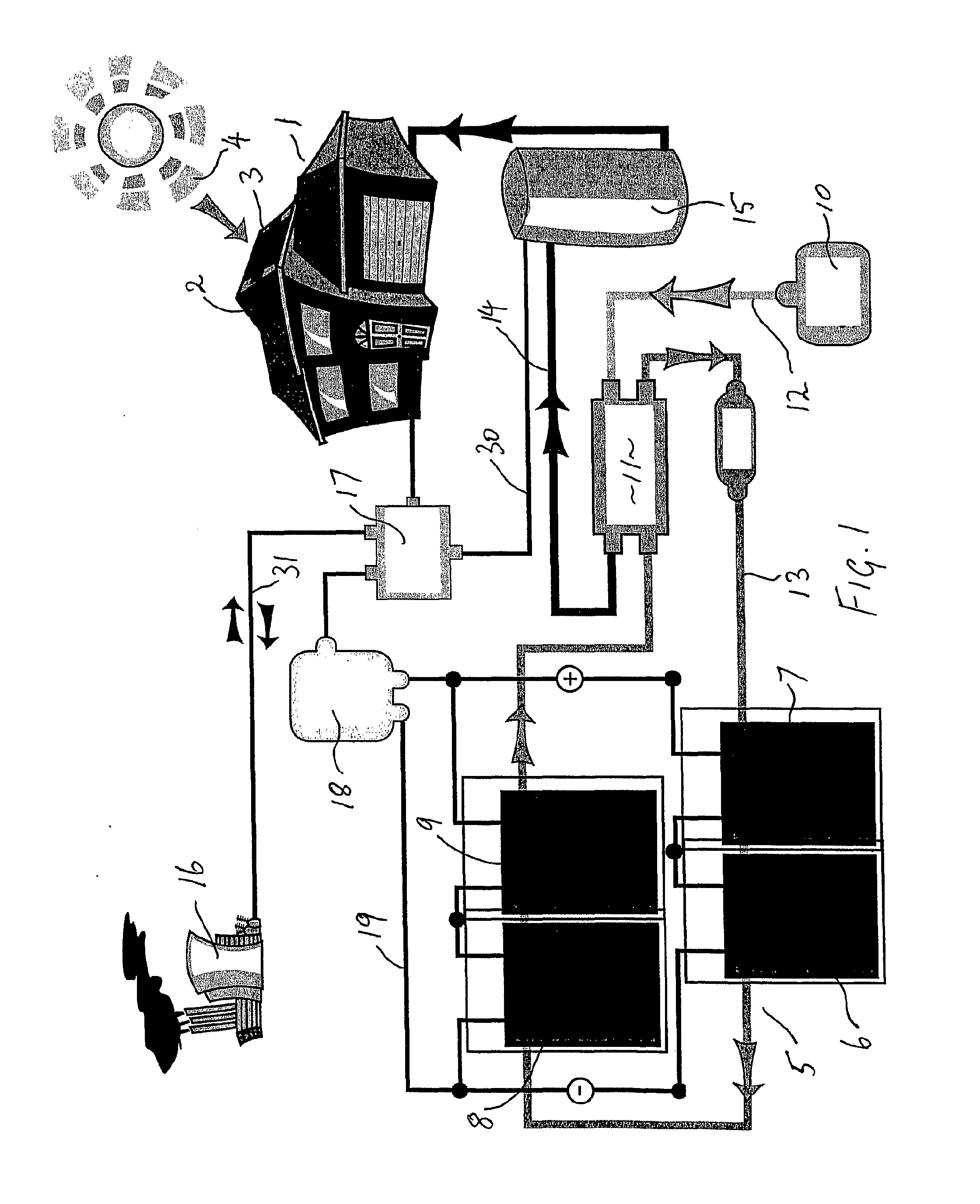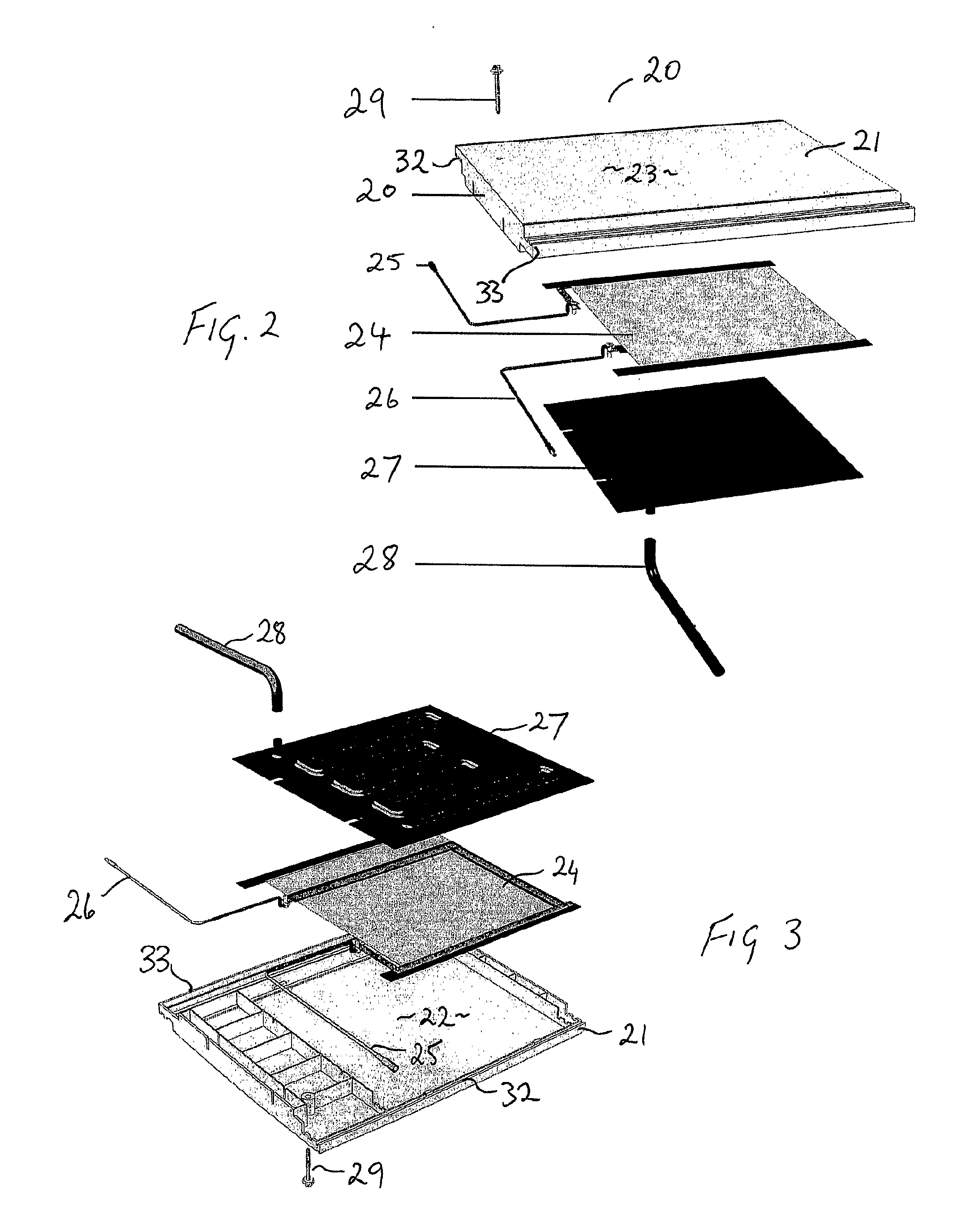Solar Energy Harvesting Apparatus
- Summary
- Abstract
- Description
- Claims
- Application Information
AI Technical Summary
Benefits of technology
Problems solved by technology
Method used
Image
Examples
Embodiment Construction
[0063]The arrangement shown in FIG. 1 comprises a dwelling 1 having a roof 2, which has located thereon an array 3 of PV / thermal solar cell elements, which receive solar rays 4. Array 3 is shown in an enlarged configuration 5, which comprises sets of elements 6, 7, 8 and 9. Water supply 10 provides a source of cold water to heat exchanger 11 via inlet pipe 12. Exchanger 11 delivers a coolant to elements 6, 7, 8, and 9 via coolant line 13. Elements 6 and 7 are in parallel with elements 8 and 9. Coolant line 13 takes supercharged coolant back to the heat exchanger, which heats water and delivers hot water via line 14 to hot water tank 15 for consumption in house 1. The system described thus far is similar to known solar systems for creating hot water except that in the embodiment shown the elements 6, 7, 8 and 9 are adapted to an existing tile roof.
[0064]On the power side, the house 1 is conventionally served by a mains AC grid, symbolically represented by the power station 16, by a s...
PUM
| Property | Measurement | Unit |
|---|---|---|
| Temperature | aaaaa | aaaaa |
| Transparency | aaaaa | aaaaa |
| Reflection | aaaaa | aaaaa |
Abstract
Description
Claims
Application Information
 Login to View More
Login to View More - R&D
- Intellectual Property
- Life Sciences
- Materials
- Tech Scout
- Unparalleled Data Quality
- Higher Quality Content
- 60% Fewer Hallucinations
Browse by: Latest US Patents, China's latest patents, Technical Efficacy Thesaurus, Application Domain, Technology Topic, Popular Technical Reports.
© 2025 PatSnap. All rights reserved.Legal|Privacy policy|Modern Slavery Act Transparency Statement|Sitemap|About US| Contact US: help@patsnap.com



